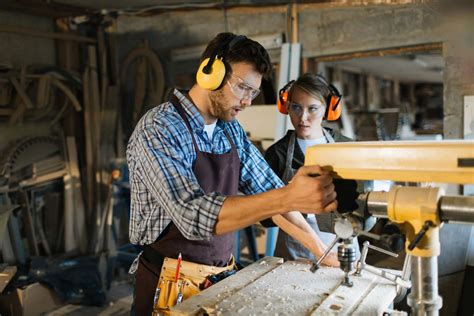The Untapped Potential of Carpentry for Social Change
Carpentry, a trade often associated with building homes and furniture, possesses a surprisingly potent capacity for social change. Beyond the tangible structures it creates, carpentry offers avenues for skill development, economic empowerment, and community building, particularly for marginalized populations. This article explores the untapped potential of carpentry as a tool for positive social impact, examining its role in job creation, rehabilitation, and environmental sustainability.
How Can Carpentry Skills Lead to Employment Opportunities?
Carpentry provides readily accessible employment opportunities, requiring minimal initial investment in tools and equipment compared to other trades. This accessibility is especially beneficial for individuals facing barriers to employment, such as those from low-income backgrounds, returning citizens, or those with disabilities. Training programs focused on carpentry can equip individuals with marketable skills, leading to sustainable livelihoods and improved economic stability. The demand for skilled carpenters remains consistently high, ensuring a continuous stream of potential employment. This is particularly true in areas experiencing housing shortages or infrastructure development.
Can Carpentry Contribute to Rehabilitation and Personal Growth?
Beyond economic benefits, carpentry offers a powerful path toward personal rehabilitation and growth. The methodical nature of carpentry, requiring precision and patience, can be incredibly therapeutic. For individuals recovering from addiction or facing mental health challenges, the structured environment of a carpentry workshop can provide a sense of purpose, accomplishment, and routine. The tangible results of their labor—a meticulously crafted piece of furniture or a repaired structure—foster a sense of self-worth and confidence, contributing to overall well-being. Many rehabilitation centers and social programs are leveraging carpentry’s therapeutic potential to support recovery and personal growth.
What is the Role of Carpentry in Sustainable Building Practices?
Carpentry plays a significant role in promoting environmentally sustainable building practices. The use of reclaimed wood, sustainable forestry practices, and energy-efficient construction techniques are all integral to the craft. Carpenters skilled in these techniques can contribute to the creation of greener homes and buildings, reducing carbon footprints and promoting environmental stewardship. Furthermore, teaching sustainable building practices alongside carpentry skills empowers individuals to build more responsible and environmentally conscious communities.
How Can Carpentry Foster Community Development?
Community-based carpentry projects can strengthen social bonds and foster community development. Shared workshops, collaborative projects, and community building initiatives centered around carpentry provide opportunities for social interaction, skill-sharing, and mutual support. These projects can lead to the creation of shared community spaces, affordable housing solutions, and improved infrastructure, ultimately enhancing the quality of life for all members of the community. The collective effort required in such projects strengthens social cohesion and promotes a sense of collective ownership and pride.
What are Some Examples of Successful Carpentry Programs for Social Change?
Numerous organizations around the world successfully use carpentry programs for social good. Many prison rehabilitation programs utilize carpentry training to equip inmates with marketable skills for reintegration into society. Similarly, organizations dedicated to supporting homeless individuals and veterans often incorporate carpentry training into their rehabilitation and job placement programs. These programs demonstrate the efficacy of carpentry as a tool for social change on a practical level.
What are the Challenges in Expanding Carpentry's Social Impact?
Despite its considerable potential, expanding carpentry's social impact faces several challenges. Access to quality training, funding limitations, and the need for skilled instructors are significant hurdles. Overcoming these challenges requires collaboration between governmental agencies, non-profit organizations, and private sector businesses to create sustainable and scalable carpentry programs that can reach marginalized communities effectively.
Conclusion: Building a Brighter Future Through Carpentry
The untapped potential of carpentry for social change is vast. By providing accessible training, fostering personal growth, promoting sustainable building practices, and strengthening community bonds, carpentry serves as a powerful tool for positive social impact. Investing in carpentry programs is not just about building structures; it’s about building stronger, more resilient, and more equitable communities for all. The future of social change may well be built, one carefully crafted piece of wood at a time.

